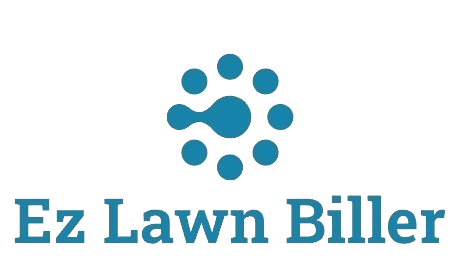Maximize customer satisfaction and improve retention through effective client follow-up strategies. Learn essential tips for lawn professionals.
Follow Up with Clients: Tips for Lawn Professionals
Maintaining thriving relationships with your clients is essential for the success of any lawn care business. In the competitive landscape of lawn maintenance and landscaping, effective client follow-up strategies can set you apart and ensure that your customers feel valued and appreciated. This blog post will explore practical tips and strategies for lawn professionals to enhance their client follow-up processes. From automated reminders to personalized communications, you’ll discover techniques that not only cultivate loyalty but also drive growth.
As a lawn care professional, your expertise isn’t just limited to mowing and fertilizing lawns; it’s also about building lasting relationships with your clients. Following up with clients after service completion can significantly influence their perception of your business and their decision to continue utilizing your services. Here, we will delve into the importance of client follow-up, various techniques to implement, and how software tools like [Lawn Biller Software](https://ezlawnbiller.com/) can enhance your efficiency in this regard.
The Importance of Client Follow-Up
Client follow-up is crucial for several reasons. First, it reinforces the idea that you care about your clients’ satisfaction beyond just completing a service. When clients feel valued, they are more likely to remain loyal to your business and recommend your services to others.
Statistics show that acquiring a new customer can be five to twenty-five times more expensive than retaining an existing one. This highlights the need for effective follow-up strategies. Additionally, regular follow-up can provide you valuable feedback on your services, allowing you to improve and adapt to your clients’ changing needs.
Moreover, a well-crafted follow-up can help identify potential upsell opportunities. For instance, if a client mentions their lawn is looking dull, you might suggest a fertilization treatment or pest control service. This proactive approach not only meets their needs but also increases your revenue. Effective follow-up is not just a nicety; it’s a strategic business practice.
Utilizing Technology for Follow-Up
In today’s digital age, technology plays a pivotal role in client communication. A robust tool like [Lawn Biller Software](https://ezlawnbiller.com/) can streamline your follow-up processes significantly. This software allows you to automate reminders and notifications, ensuring that no client is overlooked.
For example, after completing a service, you can automatically trigger a follow-up email thanking the client and asking for feedback. This email can also include information about upcoming services or promotions. By automating this process, you save time while maintaining a personal touch.
Moreover, having all your client details in one place makes it easier to track service history and preferences. This enables you to customize follow-ups based on individual client needs, enhancing your overall service quality and client satisfaction.
Crafting Personalized Follow-Up Messages
Personalization is key to effective client follow-up. When reaching out to clients, tailor your messages to reflect their unique experiences. This could include mentioning specific services they received, seasonal tips, or reminders about upcoming services.
For instance, if you treated a client’s lawn for pests, your follow-up message could inquire about any ongoing issues and suggest preventive measures. You might say, “Hi [Client’s Name], I hope you’re enjoying your pest-free lawn! If you notice any new activity, don’t hesitate to reach out. We’re here to help!”
Furthermore, sending personalized thank-you notes can create a lasting impression. A simple handwritten note expressing gratitude for their business can distinguish you from competitors and build emotional connections.
Timing Your Follow-Ups
Timing is critical when it comes to follow-ups. Ideally, you should reach out to clients shortly after the completion of a service, as their experience is still fresh in their minds. This allows you to gather immediate feedback and address any concerns promptly.
For recurring services, consider setting up a follow-up protocol that aligns with your service schedule. For example, if you provide bi-weekly lawn care, a follow-up at the midway point can reinforce your commitment to quality service. You might ask how their lawn is faring and remind them of the upcoming service.
Additionally, utilize seasonal changes as opportunities for follow-ups. As winter approaches, remind clients of winterizing their lawns or preparing for spring services. This proactive communication shows that you are knowledgeable and attentive to their lawn care needs.
Leveraging Social Media for Client Engagement
Social media platforms provide an excellent avenue for client engagement and follow-up. Use these platforms not only to showcase your work but also to interact with clients. Engaging posts can spark conversations, and follow-up messages can be sent through direct messaging, creating a more personal interaction.
Encourage your clients to share their lawn transformations on social media and tag your business. This not only serves as free advertising but also allows you to engage with them in a friendly manner. You can comment on their posts or send a follow-up message thanking them for their support.
Additionally, consider creating a private group for your clients where you can share tips, answer questions, and promote special offers. This can help foster a sense of community and keep your services top of mind.
Best Practices for Follow-Up
Implementing best practices in your follow-up process can enhance your effectiveness. First, create a systematic follow-up schedule that outlines when you’ll reach out to clients after services. Consistency is key.
Secondly, train your team on follow-up protocols to ensure everyone is on the same page. This enables a seamless approach to client communication, no matter who interacts with the client.
Finally, always track your follow-ups. Keeping records can help you identify patterns in client responses and refine your approach as needed. If you notice that certain types of follow-ups lead to more business, emphasize those in your strategy.
Encouraging Client Feedback
Encouraging client feedback is an essential component of your follow-up strategy. After providing services, ask your clients for their opinions on what you did well and where you might improve. This not only shows that you value their input but also helps you grow your business.
You can incorporate feedback requests into your follow-up emails or messages. For example, “We hope you enjoyed our service! We would appreciate any feedback you might have to help us serve you better.” This can lead to valuable insights and demonstrates your commitment to continuous improvement.
Additionally, consider using surveys to gather more structured feedback. Tools like Google Forms can help you create simple surveys that clients can fill out at their convenience. Analyzing this data can provide you with actionable insights to enhance your services.
Implementing Referral Programs
A well-structured referral program can be an excellent follow-up tool that encourages satisfied clients to recommend your services to others. After a successful service, inform your clients about your referral program and the benefits they can reap by introducing new clients.
For instance, you could offer a discount on their next service for every new client they refer. This not only incentivizes your existing clients to spread the word but also creates a personal connection that makes them feel appreciated.
A referral program can help you grow your client base and solidify long-term relationships with existing clients. It turns satisfied customers into advocates for your business, enhancing your reputation in the community.
Using Follow-Up to Upsell Services
Follow-up communications can also serve as an opportunity to upsell additional services. As you check in with clients, look for natural openings to introduce complementary services that align with their needs.
For example, if a client has recently had lawn aeration done, you could follow up by suggesting fertilization or overseeding. “Hi [Client’s Name], how’s your lawn looking after the aeration? We’ve found that a good fertilization right after can yield fantastic results!” This not only adds value to their experience but also increases your service offerings.
Additionally, seasonal reminders can be effective for upselling. Remind clients of necessary seasonal treatments, such as fall leaf cleanup or winterization, during your follow-ups. This keeps your services on their radar and demonstrates your proactive approach to lawn care.
Conclusion
Effective client follow-up is paramount for lawn professionals looking to build strong, lasting relationships with their clients. By utilizing technology, personalizing communications, and implementing best practices, you can enhance client satisfaction and retention.
Remember, the goal of follow-up is not just to check in but to engage, inform, and enhance the client experience. As you refine your approach, consider leveraging tools like [Lawn Biller Software](https://ezlawnbiller.com/) to streamline your processes and ensure no client is left behind.
Embrace the importance of proactive communication, and you’ll find that your clients are not only more satisfied but also more likely to refer your services to others. Start implementing these follow-up strategies today and watch your lawn care business thrive!




